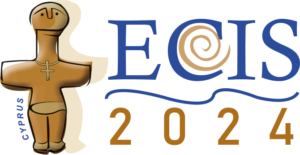Paper Number
2313
Paper Type
Short Paper
Abstract
Joint value creation of organizations in ecosystems have a high failure rate, stressing the need for tools that enable the alignment of business models through visual inquiry. However, existing visual inquiry tools rarely consider recent design knowledge or ecosystem understanding. This leads to dissatisfied users and impedes the full realization of ecosystems’ potential. This short paper proposes an archaeological design science approach for enhancing the design of visual inquiry tools (e.g., a canvas) for ecosystems. Preliminary findings reveal 24 relevant artifacts, and shortcomings in the creation of conceptual models and rigorous evaluations. The proposed research process aims to develop design principles for more effective tools to bridge the gap between visual inquiry tools and ecosystems. This research contributes to design science research by reutilizing design knowledge and further developing the archaeological design approach. It also offers valuable information to practitioners about existing business model tools for the creation of ecosystems.
Recommended Citation
Vorbohle, Christian, "Bridging Boundaries: Enhancing Visual Inquiry Tools for Ecosystems Through Design Archaeology" (2024). ECIS 2024 Proceedings. 2.
https://aisel.aisnet.org/ecis2024/track23_designresearch/track23_designresearch/2
Bridging Boundaries: Enhancing Visual Inquiry Tools for Ecosystems Through Design Archaeology
Joint value creation of organizations in ecosystems have a high failure rate, stressing the need for tools that enable the alignment of business models through visual inquiry. However, existing visual inquiry tools rarely consider recent design knowledge or ecosystem understanding. This leads to dissatisfied users and impedes the full realization of ecosystems’ potential. This short paper proposes an archaeological design science approach for enhancing the design of visual inquiry tools (e.g., a canvas) for ecosystems. Preliminary findings reveal 24 relevant artifacts, and shortcomings in the creation of conceptual models and rigorous evaluations. The proposed research process aims to develop design principles for more effective tools to bridge the gap between visual inquiry tools and ecosystems. This research contributes to design science research by reutilizing design knowledge and further developing the archaeological design approach. It also offers valuable information to practitioners about existing business model tools for the creation of ecosystems.
When commenting on articles, please be friendly, welcoming, respectful and abide by the AIS eLibrary Discussion Thread Code of Conduct posted here.


